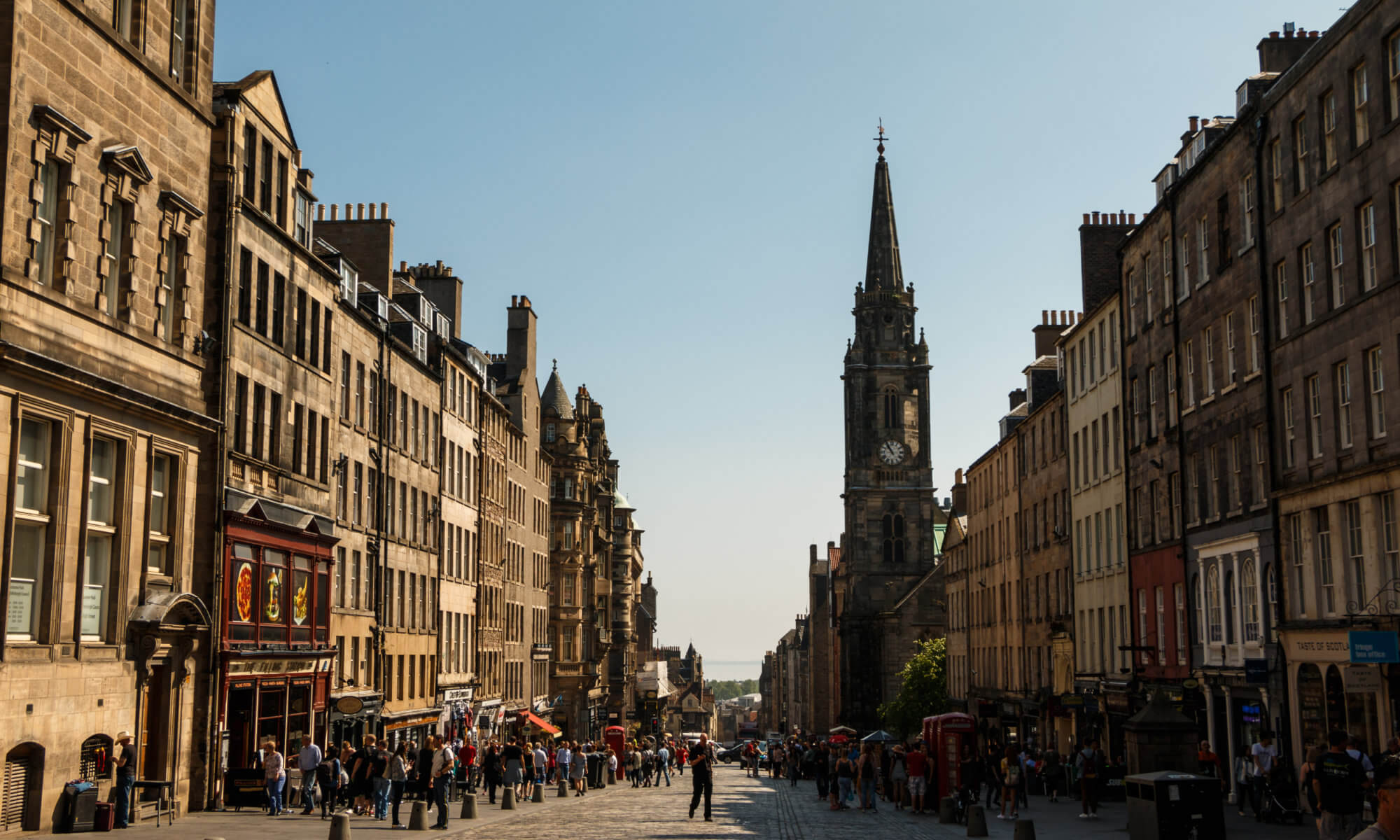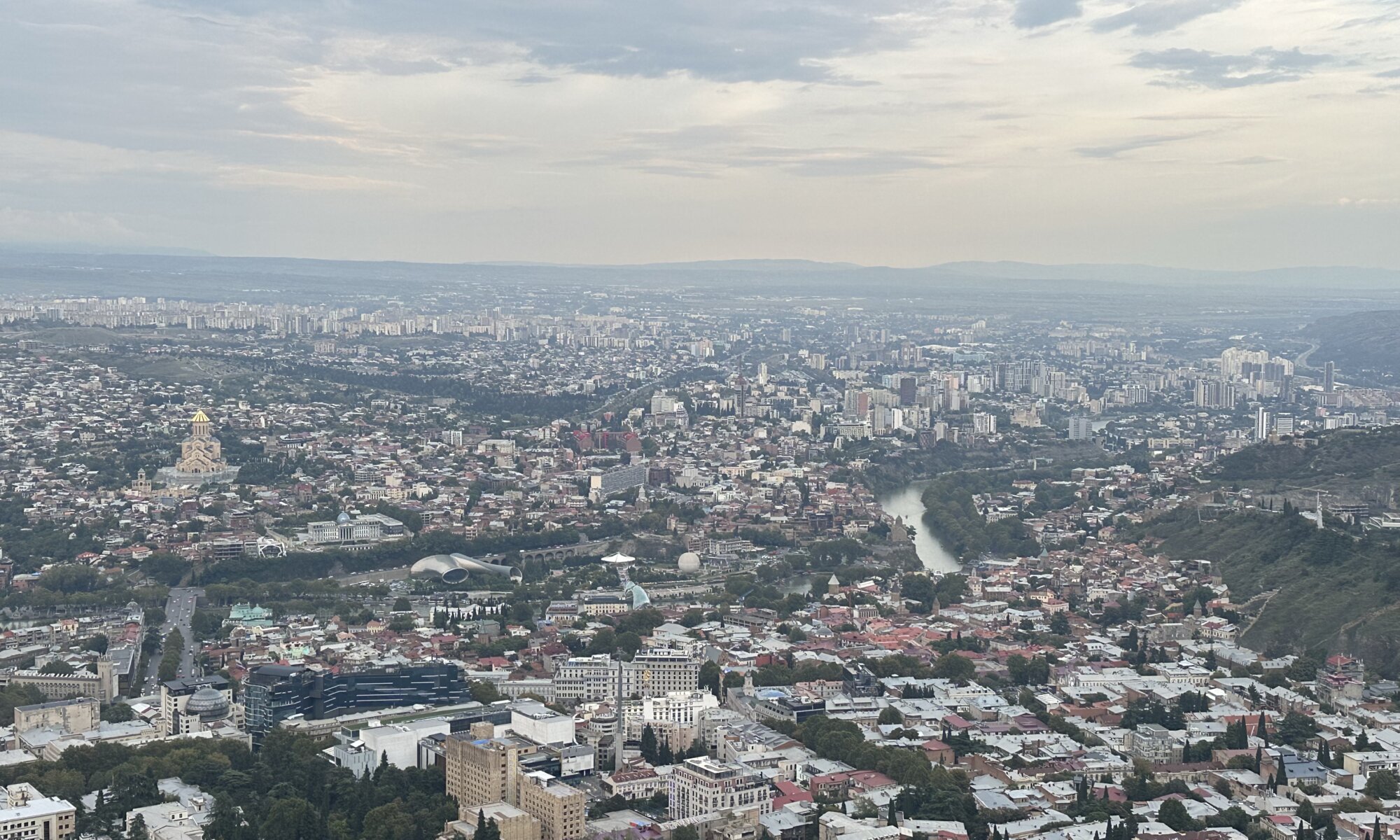It was 4 am when the lights of თბილისი appeared at the windows of the plane taking me to Georgia. A driver picked me up and drove me through the capital city that was still completely asleep. I dropped my bag at the hotel and sat in front in the dark, surrounded by stray dogs. A quick look at the watch: 5 pm, time for a coffee from one of the 24/7 shops and a walk through the empty streets to enjoy sunrise over the Mtkwari river.
But why did I arrive so early? Was there no other flight going? In fact, airlines like Lufthansa land their planes at Georgia at 4 am so that they can start at 5 am again to reach Western Europe in time for ‘normal’ daytime flights. It is therefore very much usual to arrive and leave in the middle of the night and the airport is busy and fully operational at these times.
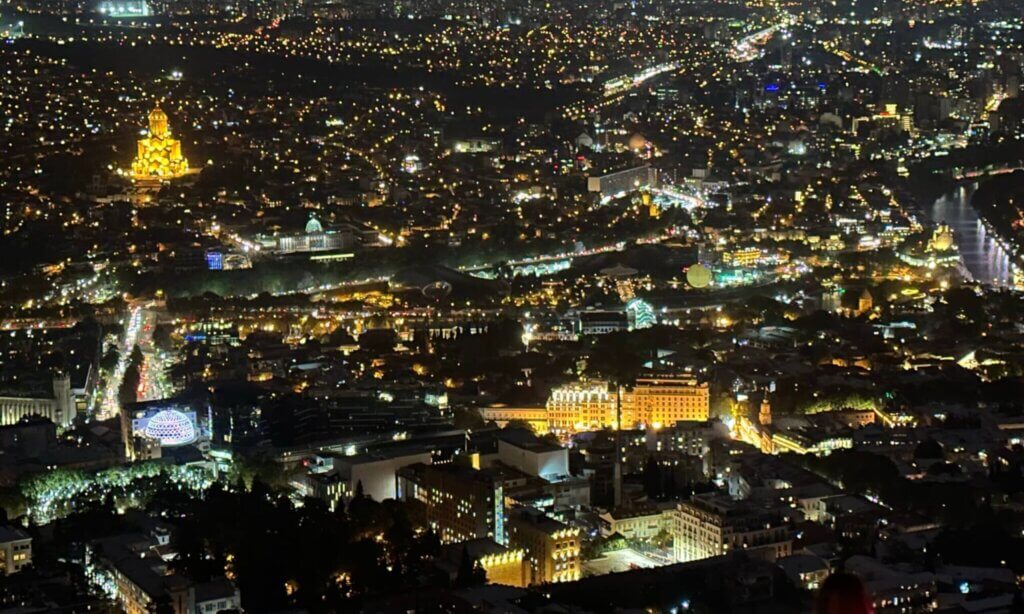
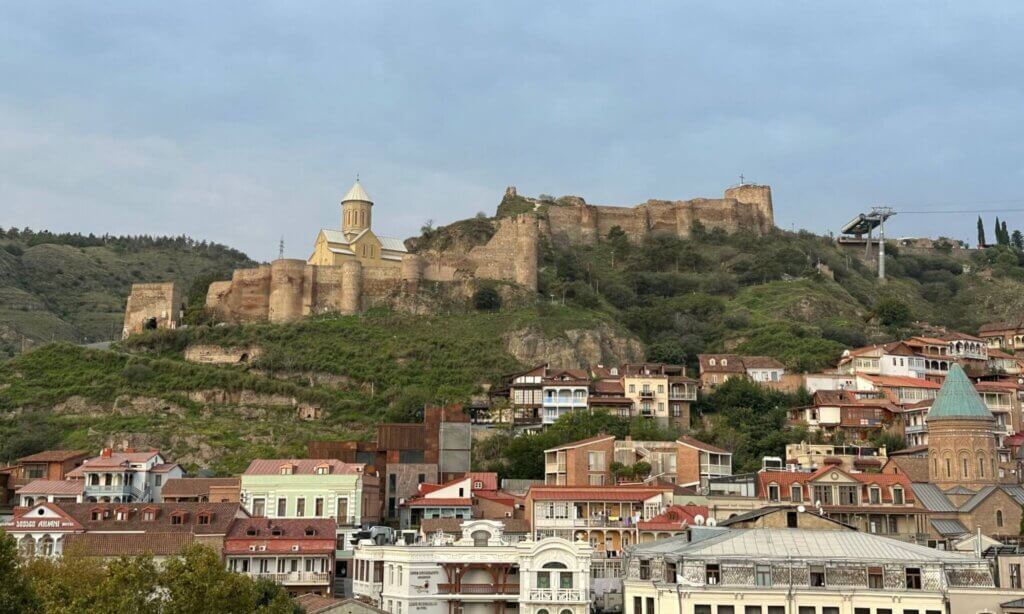
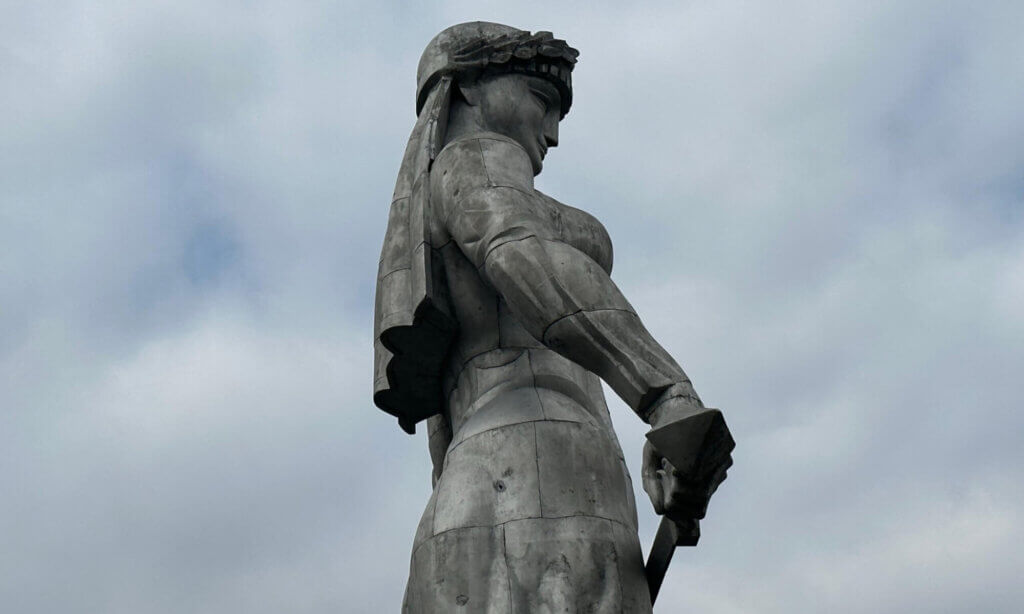
Affected by its northern neighbour
Flying to Georgia felt like a logical consequence after my wonderful trip to Armenia. Continuously travelling from West to East my next steps would have actually been Moldova, Ukraine and Belarus – but this region is currently massively affected by the Russian invasion into Ukraine. A war that also has an influence on Georgia which was formerly mostly exporting goods (and especially wine) to Russia.
But Georgia has also a problem with Russia: 20 % of its soil is currently occupied by Russian soldiers (Abchasia and South Ossetia). Georgia took side for Ukraine but nevertheless Russian tourists come and proudly show their origin and on the other hand many Russians fled to Ukraine bringing the rent for flats at თბილისი to new heights. A problematic situation especially for a country where the average monthly income is currently around 1,100 Lari (380 Euros).
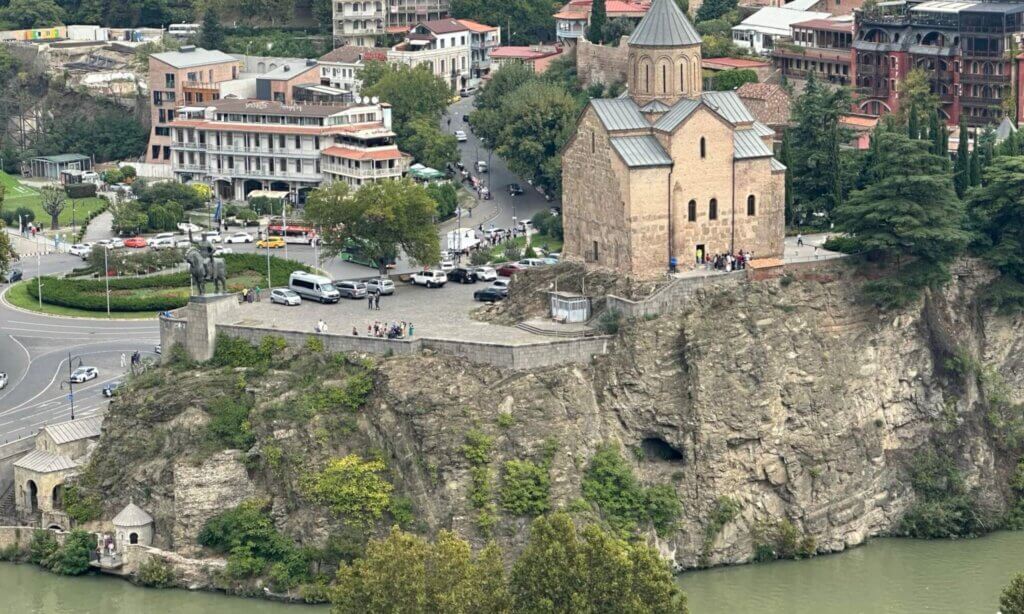
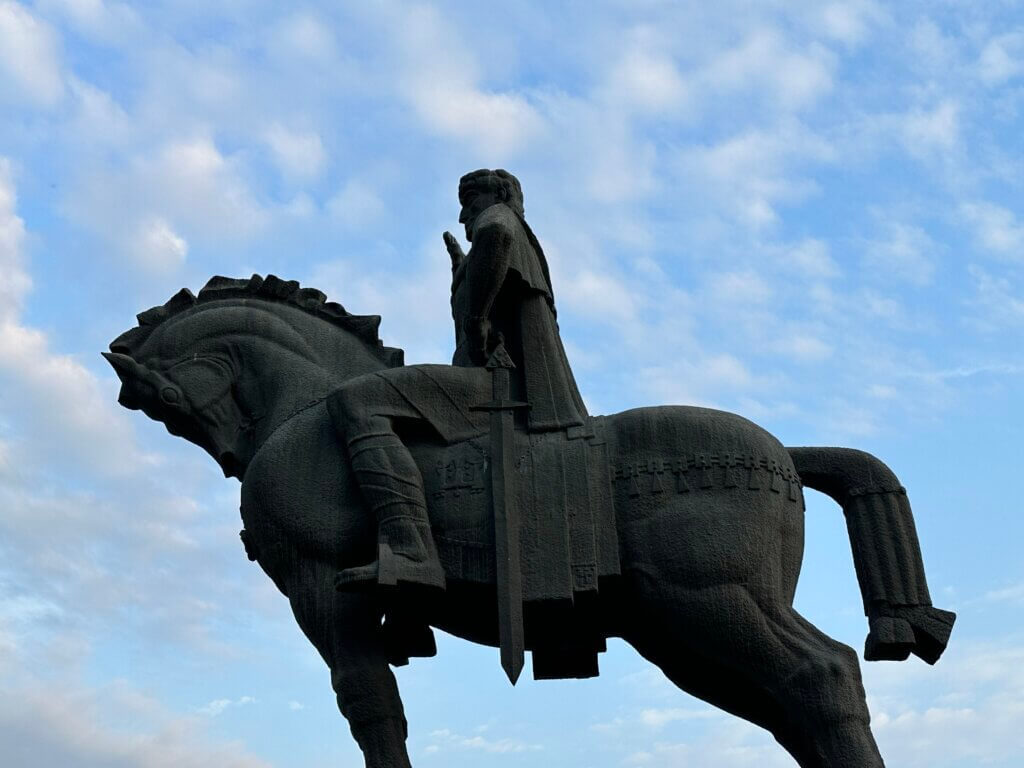
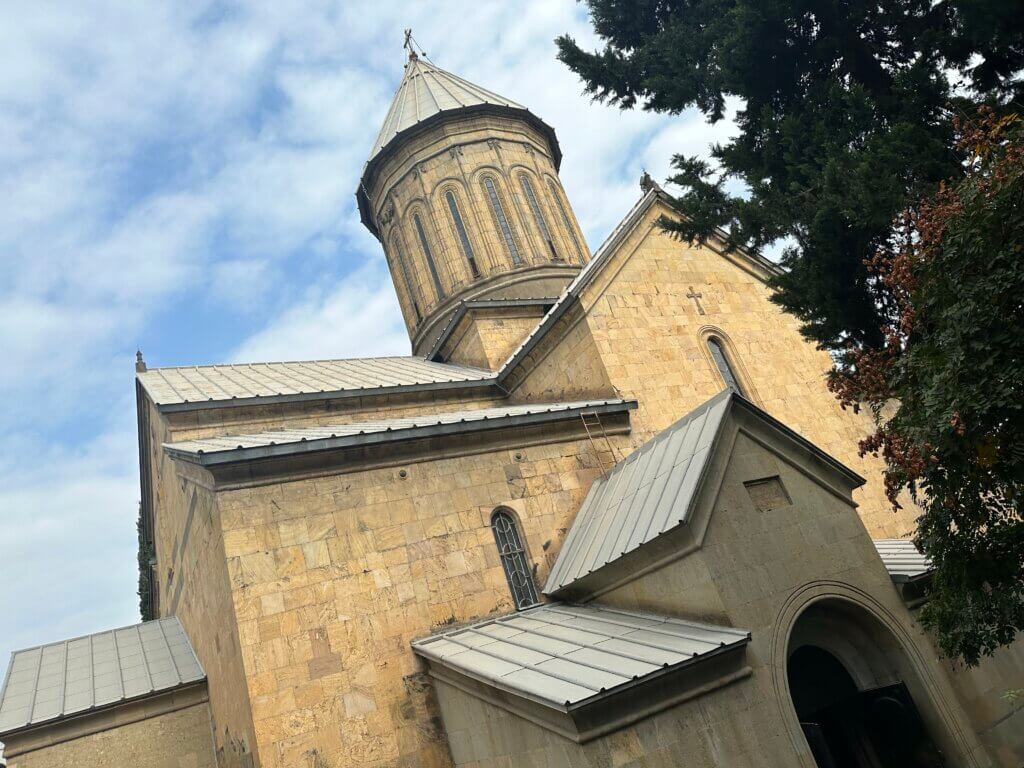
Christianity and sulphur springs
Georgia is a country in Transcaucasia with 3.7 million inhabitants sharing borders with Armenia, Turkey, Russia and Azerbaijan. It is a Christian country named after Saint George and the flag shows a Saint George’s Cross and four smaller crosses that form a so-called Jerusalem cross and together represent the five wounds of Christ. Official languages are Georgian and Abkhazian, a wonderful own alphabet is used. First findings of settlement at Georgia date back to the Paleolithic, but all great civilization in eastern Europe left traces as well: Persians, Romans, Byzantine, and the Arabs. It was later forced to become part of Russia and afterwards the Soviet Union and gained independence again in 1991. Today it is oriented towards western Europe and is on its path to join the European Union one day.
The capital city თბილისი is also named Tbilisi or Tiflis in some languages. It is located in a strategy position at the Mtkwari river where the trading route underneath could be controlled from the Nariqala high on a hill. But it is also said the sulphuric springs are the reason for creating a city there, Tbilisi means ‘warm spring’. The history of the country is well reflected in the capital city, with many old houses in traditional architecture style in the old city center, Soviet style buildings especially in the suburbs and classic Soviet city layouts surrounding the city center. But also modern elements like the bridge of peace, the concert hall in Rike park, the presidential palace or the public service hall at the river.
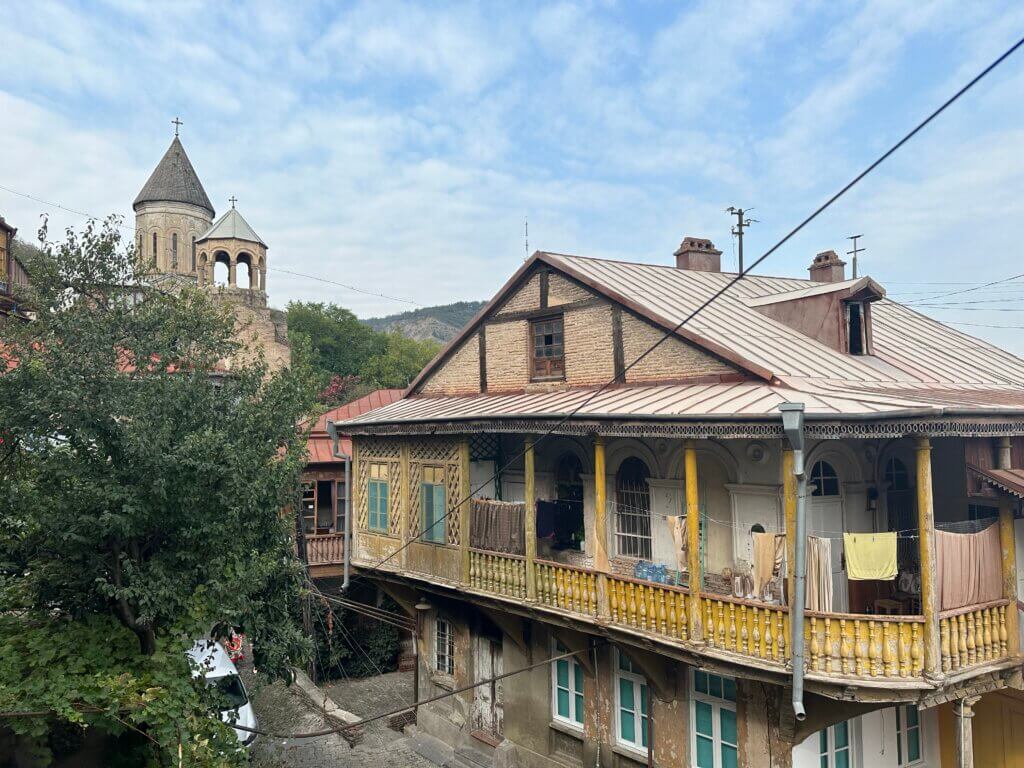
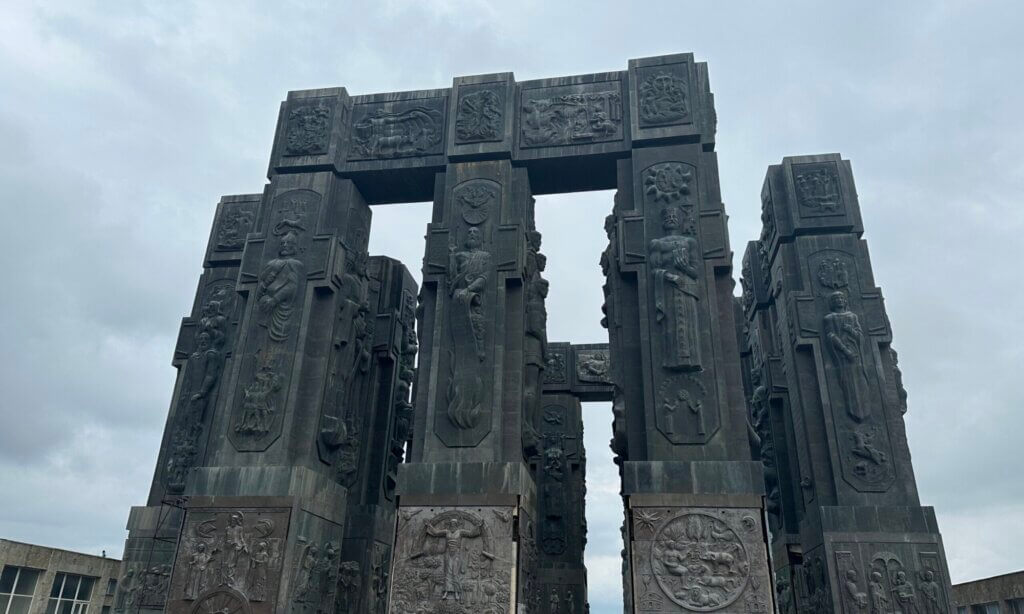
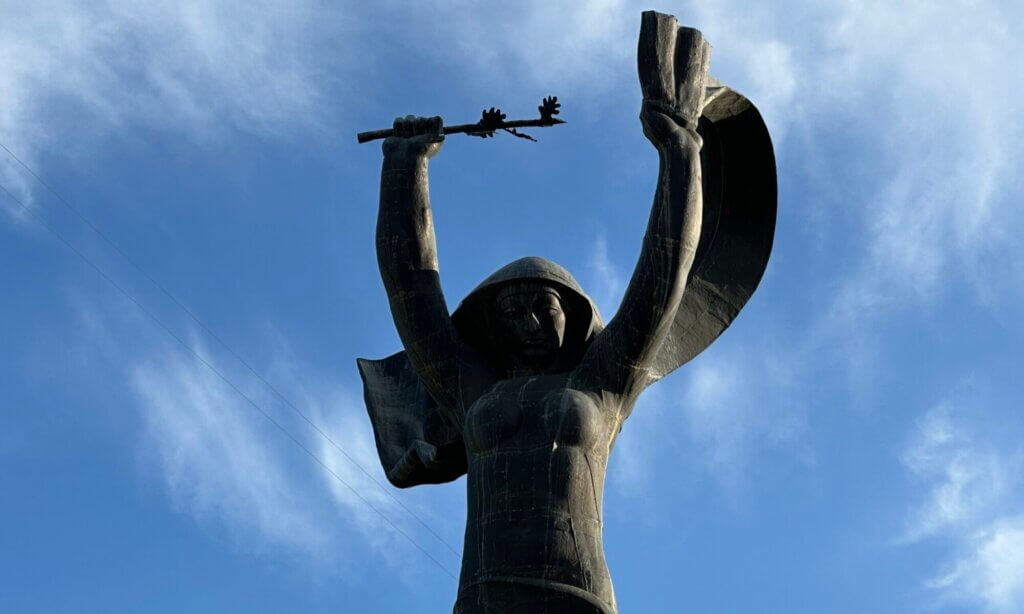
Paradise for wine and cheese lovers
What everybody travelling to Georgia talks about later is wine and food. Georgian wine is awesome and not considered as alcohol there. Every family is producing their own and as a guest you need to drink it to not insult your host. But that is no burden – it is really delicious. The three food specialties you need to try are Chatschapuri (a baked cheese bread with egg existent in different variations), Chinkali (filled dumplings) and my favorite: Kikliko (egg bread like French Toast or Poor Knights). But it is hard to pronounce them correctly as the Georgian languages has some special sounds at least I’m unable to reproduce.
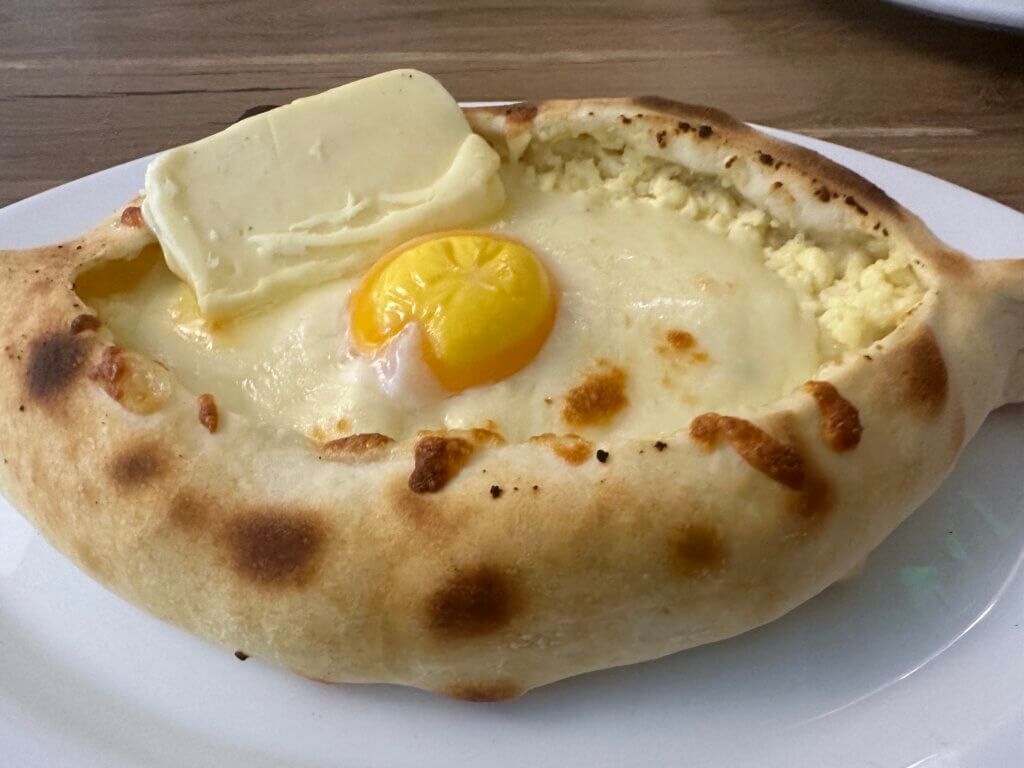
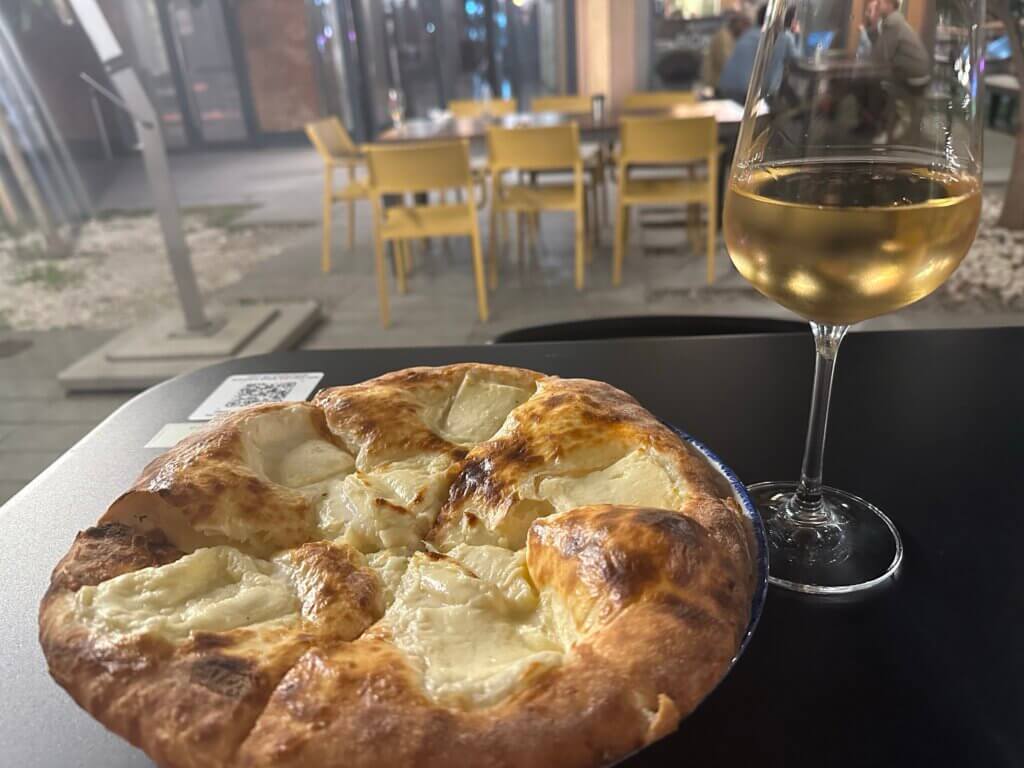
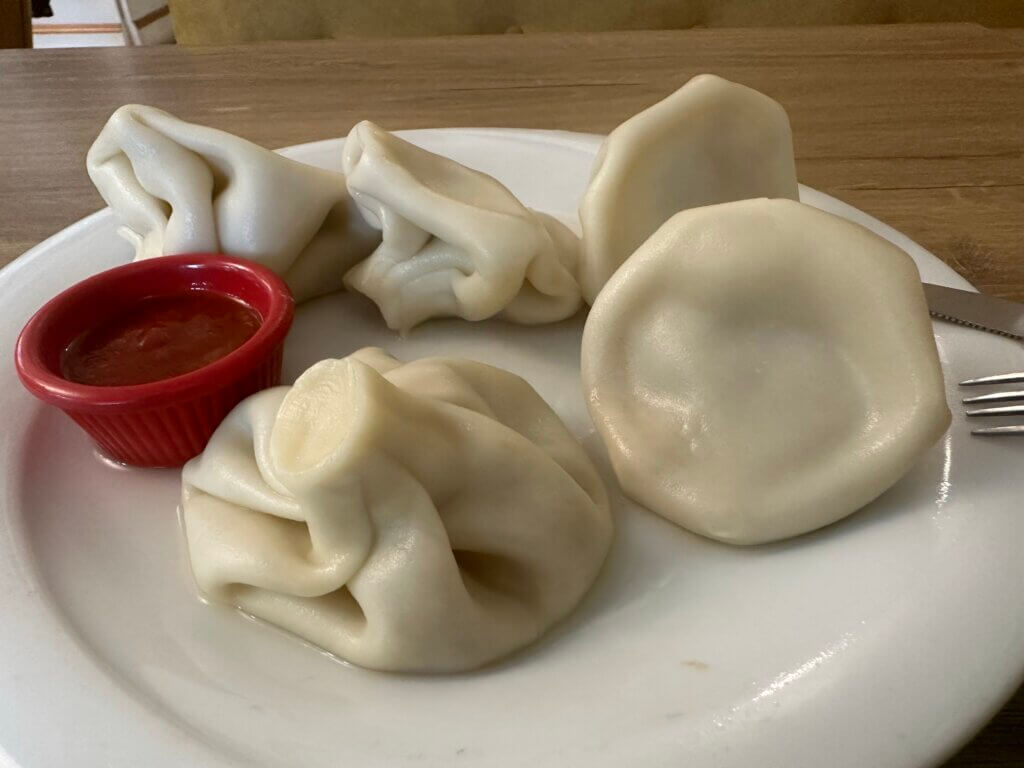
A city full of history
The capital city of Georgia is full of places to be explored. Best starting point for that is probably the germ cell of the city, the Metechi cathedral. Via ropeway you can then reach the mother of Georgia statue (Kartlis deda) and the remains of the Nariqala fortress. A nice contrast can be observed between the Sioni church in the old city center and the modern and vast Sameba church at Avlabari, beautifully illuminated at night. Close to the that you can also find the modern presidential palace from the Saakashvili era, today only used for representational purposes.
Visiting თბილისი also means to use the cable car up to the Mtatsminda fun fair, enjoy good views and take a ride in the ferris wheel high above the city. Entering the Leghvtakhevi canyon leads you to a waterfall in the city and the botanical garden, but it also brings you to the bath quarter of the city: warm springs there are used to relax in sulphuric water. I tried the Chreli Abano as well as Gulos thermal spa – a nice but exhausting experience. In the west of the city you can find the city quarter Vake with the Vake park and the World War II memorial as well as the Turtle lake above it. And you should try to get out to the Chronicle of Georgia, not only because it is a vast and impressive monument: you also get a glimpse at the suburbs and at the way how Georgians are living in the capital city.
If you’re interested in art and to learn about history there is no shortage of museums: the Georgian Museum of Fine Arts, the Georgian national museum, and the National gallery are all lined-up at the Rustaveli boulevard and all worth a visit. High above Vake you can visit the ethnographic open-air museum to see buildings from all parts of the country and in the city history museum you can learn a bit about the past of the city. Ideally you take a stay at თბილისი as the starting point to see different parts of the country, like the Caucasus mountain range or the coast. But even a short trip to the David Gareja monastery and the rainbow mountains is easily arranged and worth to take.
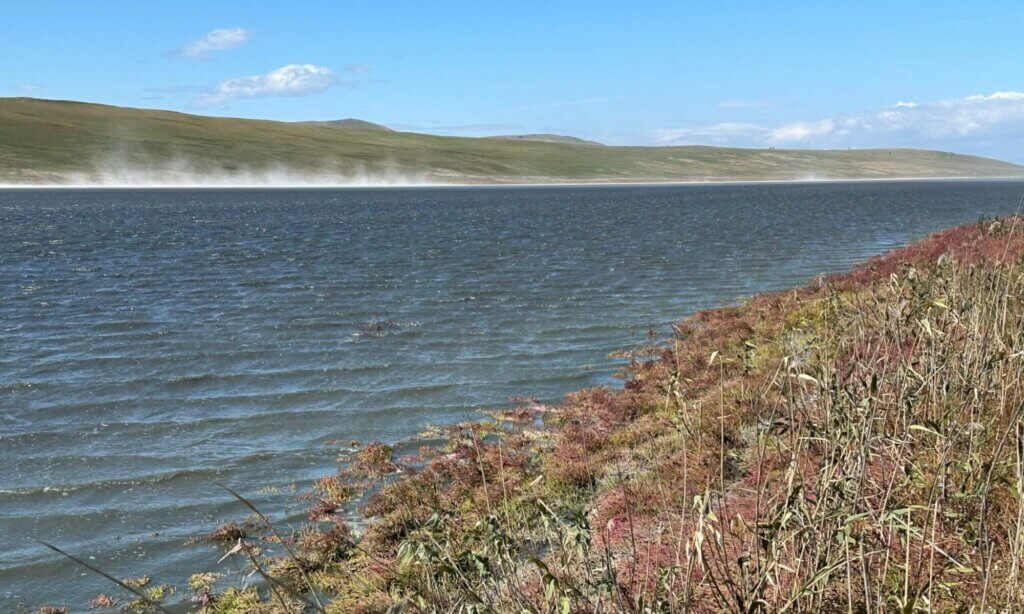
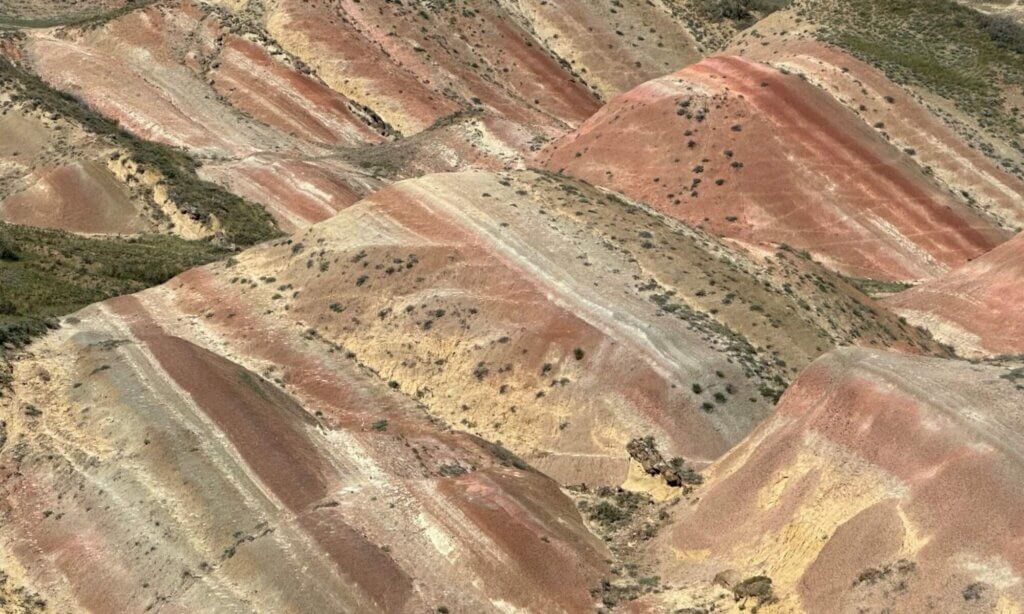
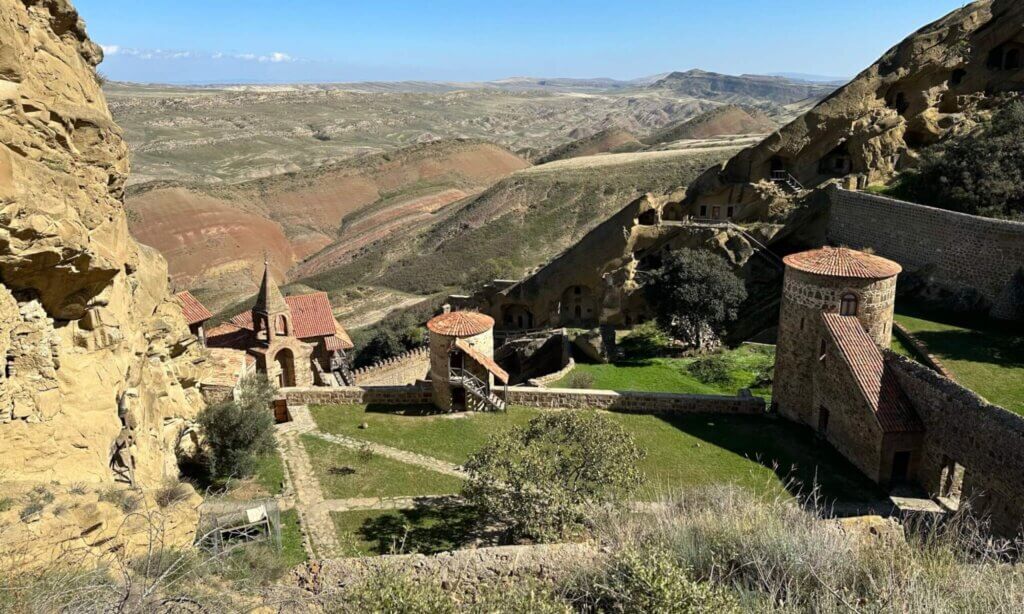
Practical hints
Exploring this Transcaucasian country was hassle-free. As a European you don’t need a visa, public transport is modern and I could even get an eSIM from Magti online already at home so that my smartphone was directly connected to the Internet when my plane landed. What was not possible was to have already some Lari (the local currency) in my pocket because it is not traded across Europe. But that was no drawback as ATMs were available at the airport and throughout the capital city and payment by credit card was easily possible. If you need a ride, the Bolt app might be your choice; if you want a pre-booked transit Gamarjoba Tours was an excellent partner. They also offer day trips through the country and into the Caucasus. Public transport is easy with the Metromoney card that you can already get from vending machines at the airport. The alphabet used in Georgia is beautiful but undecipherable, but that almost never created a problem.
Visiting Georgia was a very pleasant experience. I immediately felt like at home and explored თბილისი with a very good feeling. That was a bit different with Azerbaijan: During my stay at Georgia I visited the neighboring state as well. The night train from თბილისი to Bakı was not running as all borders were closed due to COVID-19 (or the military action at Nagorny Karabach?). I took a flight with AZAL instead and from the first moment on you could experience the authoritarian Azeri state. At Georgia I felt very much welcomed by the friendly people and I enjoyed the great wine and food. Probably I’ll have to return one day to see more of the country; to see Abchasia and the wonderful Caucasus mountain range.
თბილისი / Tbilisi
საქართველო / Georgia
Loading map...

